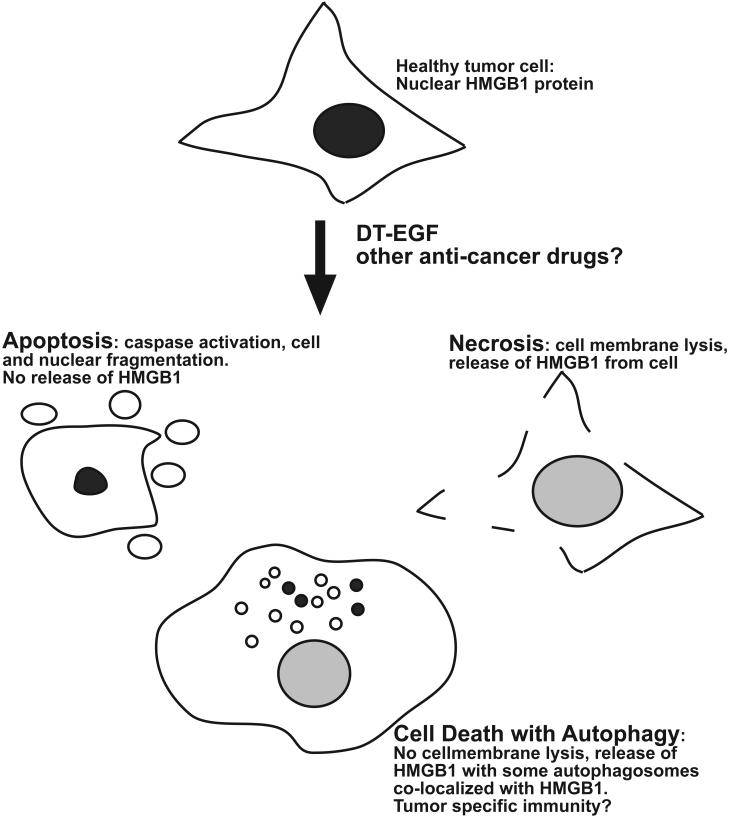Figure 1.
Autophagy-regulated release of HMGB1. Healthy tumor cells contain nuclear HMGB1 protein; when the cells are killed by DT-EGF, or perhaps other drugs, they can die by apoptosis, which involves caspase activation and cell fragmentation but little HMGB1 release. Or, they can die by necrosis, which involves abrupt lysis of the cell membrane and is associated with release of HMGB1. Alternatively, if autophagy is induced in the dying cells, the dying cells can selectively release HMGB1, through a mechanism that is associated with autophagosomes. Because HMGB1 release from dying tumor cells can lead to a tumor-specific immune response, autophagy manipulation may provide a way to improve cancer treatment by regulating the immunogenicity of dying tumor cells.

